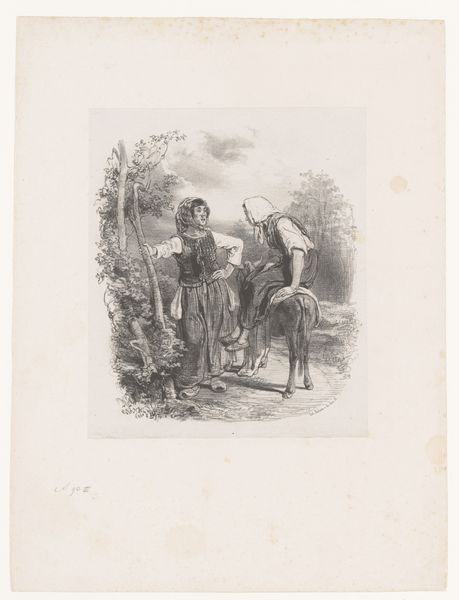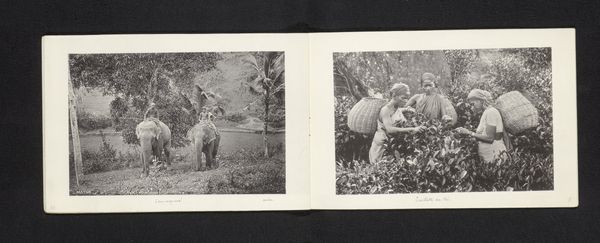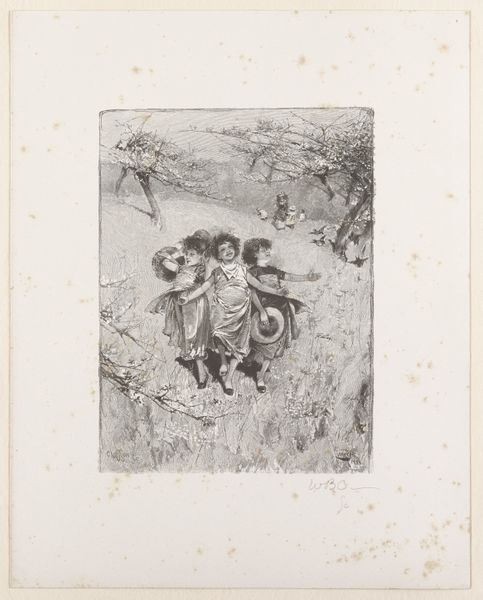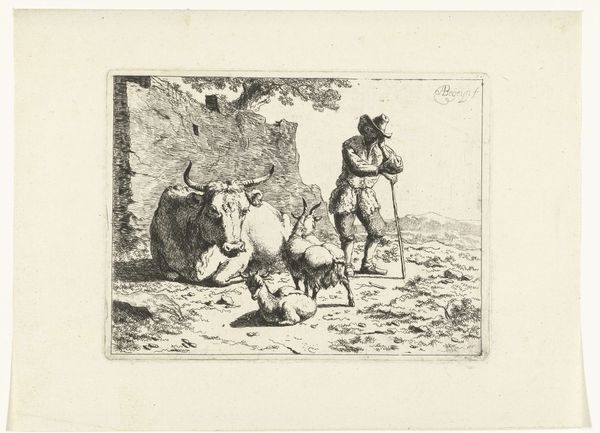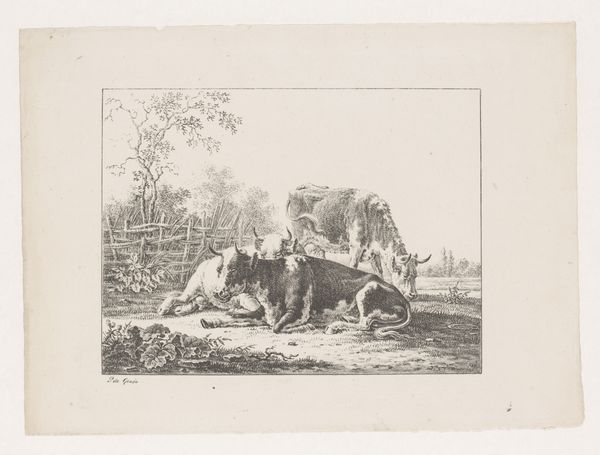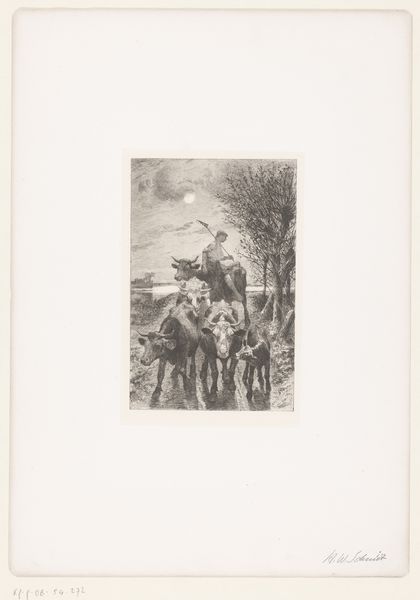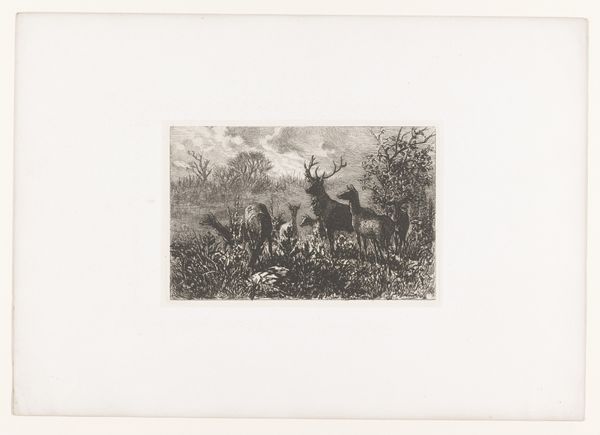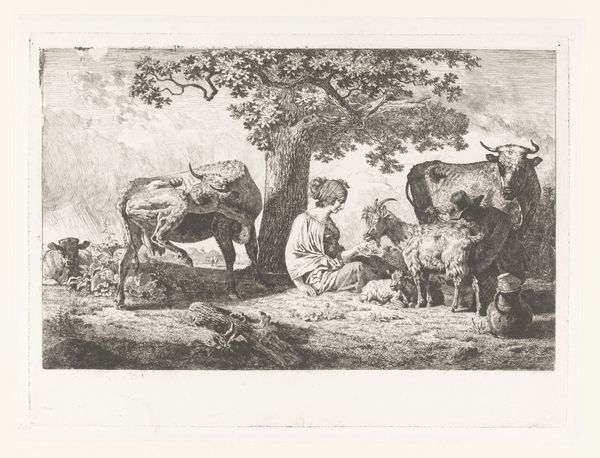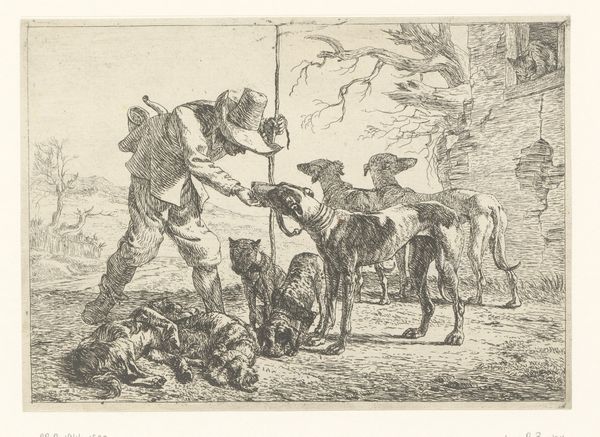
drawing, print, etching, engraving
#
drawing
# print
#
etching
#
landscape
#
child
#
genre-painting
#
engraving
#
realism
Dimensions: Sheet (Trimmed): 14 in. × 13 1/2 in. (35.5 × 34.3 cm) Plate: 6 5/16 × 7 7/8 in. (16 × 20 cm)
Copyright: Public Domain
Curator: Charles Jacque created "First Riding Lesson" in 1864. It’s rendered through etching and engraving. Editor: It has a kind of wistful charm. The composition centers on three children interacting with a very fluffy sheep, all done in monochrome. I notice immediately how detailed the textures are; I can almost feel the wool! Curator: Absolutely. The etching and engraving process allowed Jacque to achieve a remarkable level of detail. It really pulls you into the lives of these children within this specific social class in the rural landscape, offering us insights into childhood, labor, and domesticity of the period. Think about the context, editor; rural life was being romanticized. What did that mean? Editor: Certainly. And his focus on the textures – the fleece of the sheep, the children's clothing, even the foliage in the background – all point to the labor involved in the lives depicted, as well as the labor of the artist in producing such detail through printmaking. I'd like to know how many states the print exists in. Curator: The interplay of vulnerability and naivete among them is so palpable. We can discuss childhood studies in relation to ideas that existed surrounding child labor, gendered expectations of rural girls holding grain and tending flocks, while boys work to assist younger children's amusement… It is critical to understand Jacque's personal ideologies surrounding family structures, and challenge him, too, perhaps? Editor: True. While we ponder Jacque's intentions, it's equally important to note how the choice of engraving makes this image accessible. It connects to broader issues of consumption, artistic production and how these intersect with class and labor. We, the public, see this labor romanticized but can understand it further through materiality of labor represented, from Jacque to shepherdesses. Curator: Looking at it now, I am seeing further layers. A work like this isn't merely a nostalgic glance backwards, but also a testament to resilience and transformation. These kids are not only interacting, but engaging with expectations from the time; so this is about the past and, significantly, about the futures they are constructing. Editor: And the artwork's status as a print means these scenes could circulate widely, entering different homes and sparking distinct dialogues. These means of productions were very deliberately engaged with. The consumption habits of people created demand. The etching has spurred reflection for me about means, making, labor, all interwoven to impact lives then, as with now. Curator: Exactly, to consider all is necessary! Editor: Couldn't agree more!
Comments
No comments
Be the first to comment and join the conversation on the ultimate creative platform.
